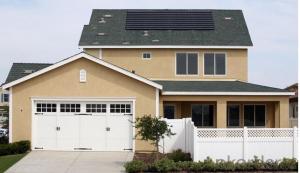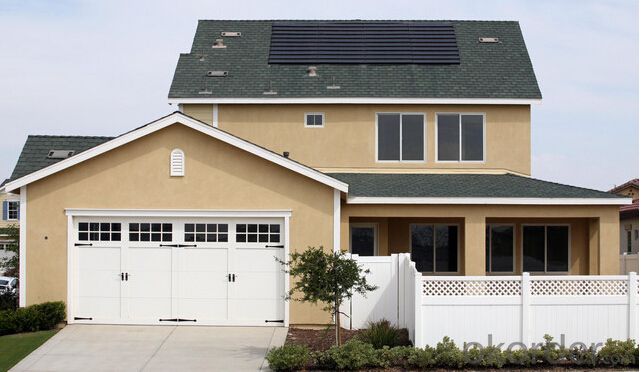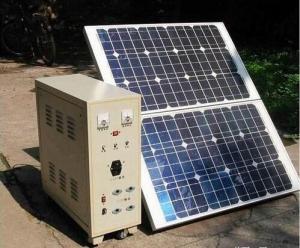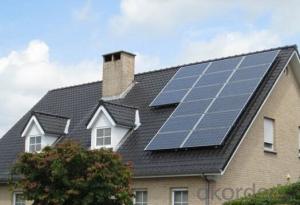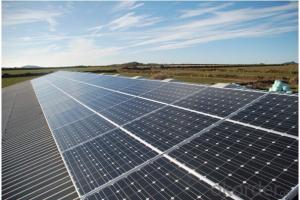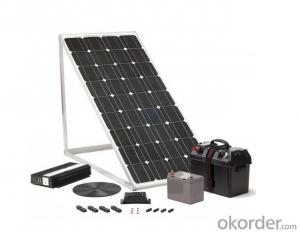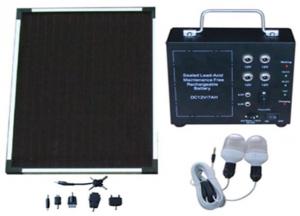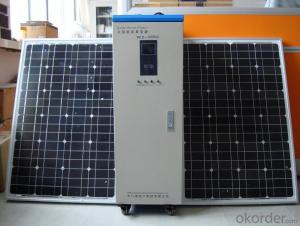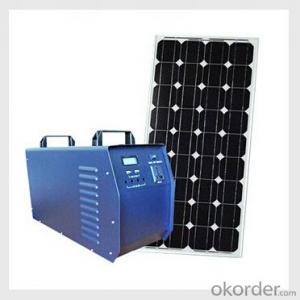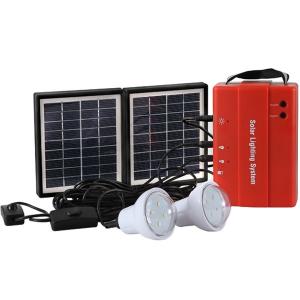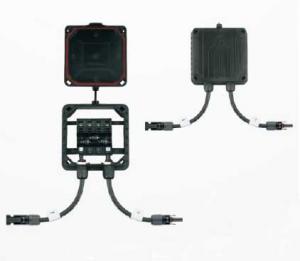Solar Energy Systems Iowa - 1kW Solar System Made in China
- Loading Port:
- China Main Port
- Payment Terms:
- TT OR LC
- Min Order Qty:
- -
- Supply Capability:
- -
OKorder Service Pledge
Quality Product, Order Online Tracking, Timely Delivery
OKorder Financial Service
Credit Rating, Credit Services, Credit Purchasing
You Might Also Like
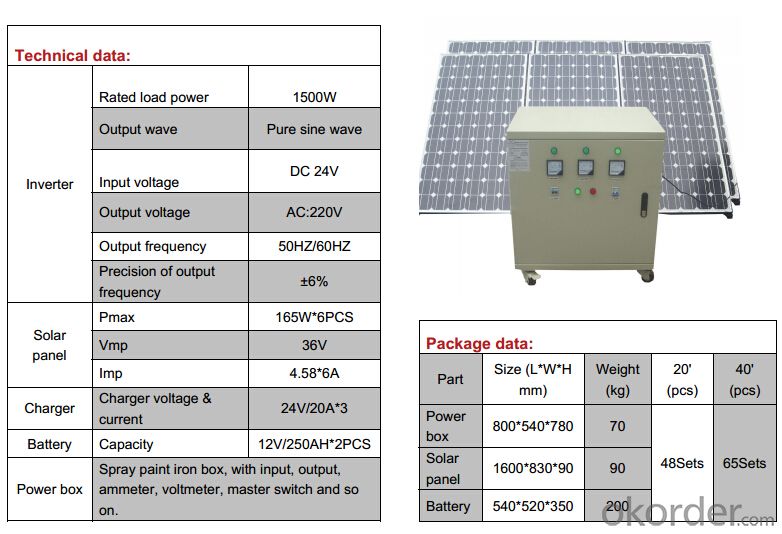
- Q: Can solar energy systems be used during a power outage?
- Yes, solar energy systems can be used during a power outage. However, this is only possible if the solar energy system is equipped with battery storage. Without battery storage, the solar panels will not be able to generate electricity during a power outage as they rely on grid connection to function.
- Q: Are solar energy systems suitable for residential properties?
- Yes, solar energy systems are suitable for residential properties. They can efficiently generate electricity and provide homeowners with a clean and renewable energy source. Additionally, solar panels can be installed on rooftops, maximizing space utilization. With advancements in technology, solar energy systems have become more affordable, making them a viable option for residential properties.
- Q: Can solar energy systems be used in powering religious institutions like churches or temples?
- Yes, solar energy systems can certainly be used to power religious institutions like churches or temples. In fact, solar power is an ideal solution for these buildings as they often have large roofs that can accommodate solar panels. By installing solar energy systems, religious institutions can significantly reduce their electricity bills, save money, and become more sustainable. Solar panels generate electricity by converting sunlight into usable energy. This energy can be used to power the lighting, heating, cooling, and other electrical needs of the religious institution. With advancements in solar technology, it is now possible to store excess energy in batteries, ensuring uninterrupted power even during cloudy days or at night. Using solar energy not only reduces the operational costs of the religious institution but also helps in reducing its carbon footprint. By reducing dependency on fossil fuels, solar power systems contribute to mitigating climate change and promoting environmental stewardship. This aligns with the core values of many religious organizations that emphasize the importance of environmental sustainability and being responsible stewards of the Earth. Furthermore, solar energy systems can serve as a visible example of the religious institution's commitment to sustainable practices, inspiring its members and the wider community to adopt renewable energy solutions. By utilizing solar power, religious institutions can demonstrate their dedication to caring for the planet and encouraging others to follow suit. In summary, solar energy systems can be successfully used to power religious institutions like churches or temples. They offer an environmentally-friendly and cost-effective solution that aligns with the values of many religious organizations. By embracing solar power, these institutions can reduce their energy costs, promote sustainability, and inspire their members and the community to adopt clean energy solutions.
- Q: Can solar energy systems be used in remote areas without access to the power grid?
- Yes, solar energy systems can certainly be used in remote areas without access to the power grid. In fact, solar power is often the ideal solution for such locations. Solar energy systems consist of solar panels that convert sunlight into electricity, and this electricity can be used to power various appliances and devices. Remote areas that are off-grid typically lack access to traditional sources of electricity, such as power lines. However, solar energy systems provide an independent and sustainable source of power. By harnessing the abundant sunlight available in these areas, solar panels can generate electricity even in the absence of a power grid. Solar energy systems in remote areas can be designed to store excess energy in batteries, ensuring a continuous power supply even during cloudy days or at night. These battery systems allow for the storage of solar-generated electricity, providing a reliable source of power for various needs, such as lighting, communication devices, water pumps, refrigeration, and even powering small businesses. Furthermore, the installation and maintenance of solar energy systems in remote areas are often more cost-effective compared to extending power lines from the grid. Solar panels have become more affordable in recent years, and advancements in technology have increased their efficiency and durability. Additionally, the absence of fuel costs and the minimal need for ongoing maintenance make solar energy systems a sustainable and cost-efficient solution for remote areas. Overall, solar energy systems are an excellent option for powering remote areas without access to the power grid. They provide a sustainable, reliable, and cost-effective source of electricity, enabling the development and improvement of communities in these remote locations.
- Q: Can solar energy systems be used in disaster-prone areas?
- Yes, solar energy systems can be used in disaster-prone areas. In fact, they can be particularly beneficial in such areas. Traditional power grids are often fragile and vulnerable to damage during natural disasters such as hurricanes, earthquakes, or floods. This can leave the affected areas without electricity for extended periods, hindering relief and recovery efforts. Solar energy systems, on the other hand, are decentralized and can operate independently of the grid. These systems consist of solar panels that convert sunlight into electricity, which can be stored in batteries for use during times of power outage. This allows critical facilities, such as hospitals, emergency response centers, and shelters, to continue functioning even when the grid is down. Solar energy systems can provide a reliable source of power for lighting, communication, refrigeration, and medical equipment, greatly enhancing the resilience and effectiveness of disaster response. Furthermore, solar energy systems can also be used to power water pumps, providing communities with access to clean water during times of crisis. This is particularly important in disaster-prone areas, where access to safe drinking water can be severely compromised. Solar-powered pumps can extract water from wells, rivers, or other sources, ensuring a constant supply for drinking, sanitation, and hygiene purposes. Additionally, solar energy systems can contribute to long-term recovery efforts in disaster-prone areas. By reducing dependence on fossil fuels and traditional power grids, they can help build more sustainable and resilient communities. Solar panels can be installed on rooftops or in open spaces, making use of abundant sunlight resources. This not only reduces greenhouse gas emissions and mitigates climate change but also provides a reliable and affordable source of energy for homes, businesses, and public infrastructure. In conclusion, solar energy systems can be effectively used in disaster-prone areas to provide reliable power, support critical services, and contribute to long-term resilience. By harnessing the power of the sun, these systems offer a sustainable and decentralized solution to energy needs, ensuring that communities can withstand and recover from natural disasters more effectively.
- Q: How do solar energy systems impact the electricity grid?
- Solar energy systems impact the electricity grid by reducing the demand for electricity from traditional power plants and lowering overall electricity costs. They also contribute to a more resilient and decentralized grid by generating electricity closer to where it is consumed, reducing transmission losses and enhancing grid stability. However, the intermittent nature of solar power can pose challenges for grid operators in terms of managing fluctuations in supply and demand.
- Q: Can solar energy systems be used in areas with limited access to solar charge controllers?
- Yes, solar energy systems can still be used in areas with limited access to solar charge controllers. While solar charge controllers are important for regulating and managing the charging and discharging of batteries in solar energy systems, there are alternative methods for controlling and optimizing the charging process. These can include the use of manual charge controllers or voltage regulators, as well as implementing proper battery management techniques to prevent overcharging or deep discharging. Additionally, advancements in technology have led to the development of more efficient and resilient solar panels, which can help mitigate the limitations of limited access to charge controllers in such areas.
- Q: What permits or approvals are required for installing a solar energy system?
- The permits and approvals required for installing a solar energy system vary depending on the location and specific regulations. Generally, you may need to obtain permits from your local government or utility company. These could include building permits, electrical permits, and zoning permits. Additionally, you might need to have your system inspected by a qualified professional to ensure compliance with safety and performance standards. It is advisable to consult with local authorities or a solar installation company to determine the exact permits and approvals needed for your specific situation.
- Q: How does solar energy impact property values?
- Solar energy can have a positive impact on property values as it is seen as a desirable and sustainable feature by potential buyers. Homes with solar panels often sell for higher prices and can attract more interested buyers due to the potential long-term savings on energy bills and the environmental benefits they offer.
- Q: How does the distance between solar panels affect their performance?
- The performance of solar panels can be significantly affected by the distance between them. When solar panels are placed in close proximity, shading problems can arise. This occurs when one panel blocks sunlight from reaching another panel, resulting in reduced efficiency. Consequently, overall energy output may decrease. Conversely, if solar panels are spaced too far apart, inefficiencies in space usage can occur. Since solar panels require a specific amount of space to capture sunlight, larger gaps between panels can lead to wasted space that could have accommodated additional panels. Determining the ideal distance between solar panels depends on various factors, including panel tilt, location, and orientation. In general, it is recommended to maintain a distance of approximately 1.5 times the height of the panels. This spacing allows for efficient use of space while minimizing shading issues. Furthermore, the distance between solar panels also impacts the efficiency of the wiring system. If panels are placed too far apart, more wiring may be necessary, resulting in increased costs and potential energy losses due to resistance in the wiring. In conclusion, the distance between solar panels plays a crucial role in their performance. It is essential to carefully consider this factor in order to strike a balance between optimal space utilization, minimizing shading issues, and ensuring an efficient wiring system. By finding the right balance, solar panels can maximize their energy production and contribute to a more sustainable and renewable energy future.
Send your message to us
Solar Energy Systems Iowa - 1kW Solar System Made in China
- Loading Port:
- China Main Port
- Payment Terms:
- TT OR LC
- Min Order Qty:
- -
- Supply Capability:
- -
OKorder Service Pledge
Quality Product, Order Online Tracking, Timely Delivery
OKorder Financial Service
Credit Rating, Credit Services, Credit Purchasing
Similar products
Hot products
Hot Searches
Related keywords
